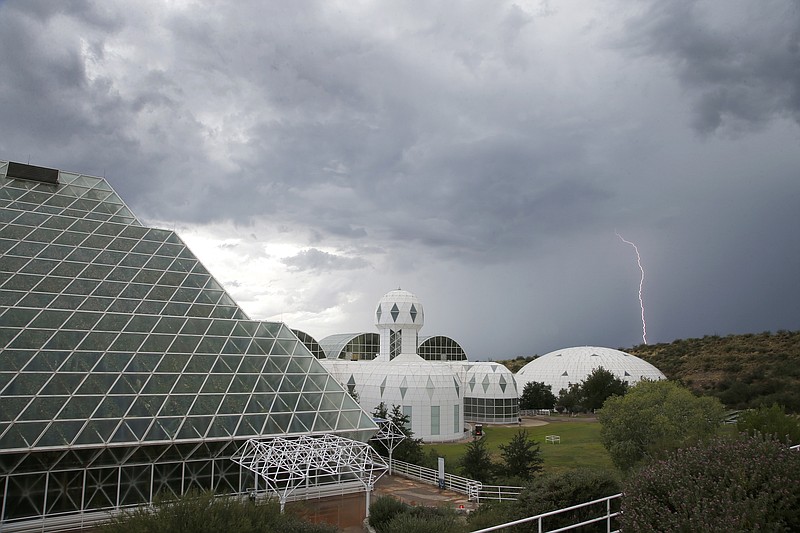ORACLE, Ariz. (AP) - They lived for two years and 20 minutes under the glass of a miniature Earth, complete with an ocean, rain forest, desert, grasslands and mangroves. Their air and water were recycled, and they grew the sweet potatoes, rice and other food they needed to survive.
About 1,500 people were invited and some 200 journalists were on hand as the eight original inhabitants of Biosphere 2 left their glass terrarium a quarter-century ago last month in two groups that no longer talked to each other amid the stress of sharing a small space and disputes over how the project should be run. Detractors called the $150 million experiment a failure because additional oxygen was pumped into what was supposed to be a self-sustaining system.
A power struggle in subsequent months led Texas billionaire backer Edward P. Bass to hire investment banker Stephen Bannon, who was later President Trump's chief strategist, to bring the project back from financial disarray.
Today, Biosphere 2 is a different kind of place, a University of Arizona site where researchers from around the world can study everything from the effects of the ocean's acidification on coral to ways of ensuring food security.
"It started out as a great, big kind of societal experiment and was transformed by pure ingenuity into something else that has proved useful," said Jeffrey S. Dukes, director of the Perdue Climate Change Research Center. "It's also a really cool facility to tour."
Joaquin Ruiz, a geologist who directs the project in the Sonoran Desert about 30 miles northeast of Tucson, said Biosphere 2's controlled environments allow researchers to conduct experiments they won't try outside "because you don't want to have unintended circumstances."
That means researchers from the Global Institute for Water Security at the University of Saskatchewan in Canada don't have to worry about harming the environment while studying how plants in the tiny rainforest adjust their water consumption.
The miniature ocean is being renovated so researchers from places including the University of Hawaii can continue experiments on a miniature reef without hurting reefs in the Pacific. A $550,000 grant from Johns Hopkins University is helping scientists test theories about water movement on three artificial hillslopes known as the Landscape Evolution Observatory, a gigantic Earth science laboratory.
The university assumed management of Biosphere 2 in mid-2007 and in June 2011 announced full acquisition of the glass-enclosed area of just over 3 acres that reaches as tall as 75 feet in some places, and the buildings and grounds around it.
Like Dukes, independent ecologist Christopher Field, director of the Stanford Woods Institute for the Environment, said Biosphere 2 has proved useful for science in its current iteration.
"You have to separate it from what it was originally to see its worth today," said Field, adding controlled environment facilities like Biosphere 2 "are a powerful way to help us understand the way the world works."
"It is an important piece in our portfolio for understanding climate change," he said.
Biologist John Adams, Biosphere 2's deputy director, has been with the project since 1995, when he was a new University of Arizona graduate. "It's always been an audacious, ambitious project," he said.
Adams said 55 people now work at the site, including 30 researchers. Bass donated $30 million to Biosphere 2 last year and sits on its advisory board.

